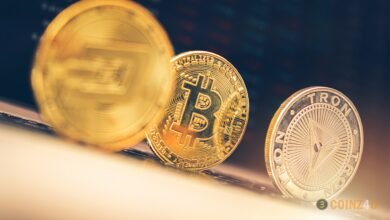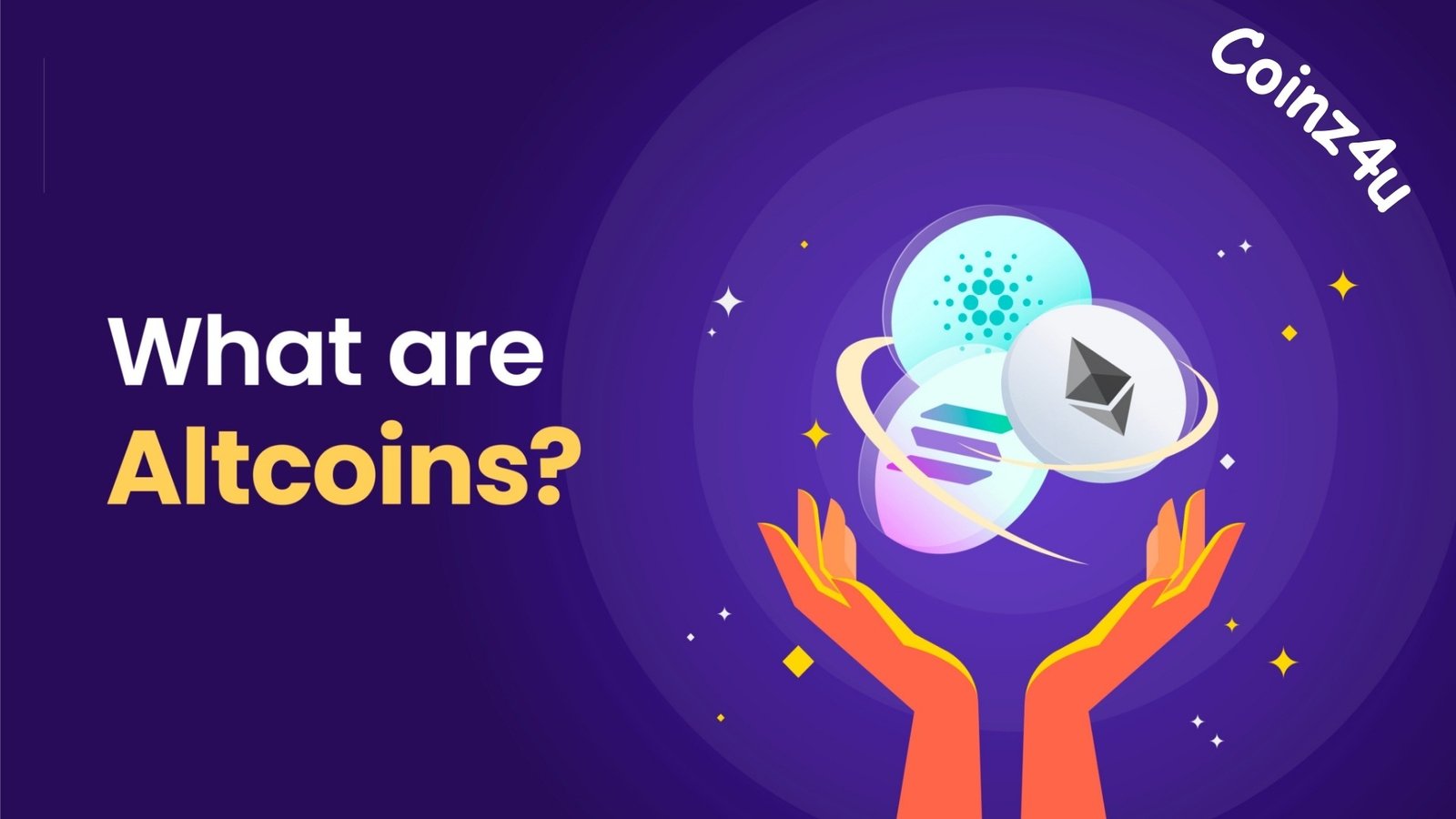Altcoins vs Stablecoins: Significant Differences Stated

Altcoins vs Stablecoins: Significant Differences Stated. The term “altcoin” refers to any cryptocurrency that is not Bitcoin (BTC) or any coin that is similar to Bitcoin but is not Bitcoin (BTC) $68,575. Much of the cryptocurrency industry is devoted to altcoins, often built to rival Bitcoin’s functionality. Any major cryptocurrency exchange, specifically an altcoin exchange, can trade altcoins. Learn about stablecoins and altcoins, how they differ, and what each is good for in this article. Finally, the paper finishes by analysing some of the most widely used stablecoins today.
What is a Stablecoin?
To provide price stability within the cryptocurrency market, stablecoins are alternative cryptocurrencies. The goal of a stablecoin is to maintain a steady value independent of market volatility. For instance, the DAI stablecoin has a $1 peg to the USD. Therefore, 1 DAI is equivalent to $1 at all times.
Theoretically, the market value of a stablecoin can be tied to anything. Although pegging a stablecoin’s value to the dollar is already commonplace, this does not mean a “best” stablecoin exists. Stablecoins can be algorithmically linked to other cryptocurrencies as well. Although other others exist, the first stablecoin was Tether USDT $1.00.
Altcoins vs Stablecoins: Key Differences
Altcoins and stablecoins differ primarily in their intended use and, by extension, their functionality. As a buffer against the severe price volatility of altcoins, stablecoins aim to give a certain level of stability. It should be noted that stablecoins maintain a constant cash reserve.
Differentiating themselves from Bitcoin, altcoins offer new and valuable features, such as the ability to use decentralized finance (DeFi) tools. Smart contracts enable these features, allowing cheaper costs and quicker transactions than Bitcoin. Altcoins, like Bitcoin, can experience wild price swings. The top alternative cryptocurrencies aim to improve Bitcoin’s initial consensus mechanism and gain a substantial portion of the market. So, they may provide early backers with a huge return on their investment.
Return on investment is significantly lower with stablecoins. Interest rates on stablecoins range from 5% to 20%, but that’s not the only thing that makes them attractive to traders. The ability to integrate innovative design enhancements into the crypto token and the fact that stablecoins eliminate the need for users to on-ramp fiat are two of the many benefits of stablecoins. The constant price of stablecoins is essential for cryptocurrency transactions that depend on speed for profitability, even though it is not as rewarding for investors.
Is Ethereum an Altcoin?
According to trading volume and total value locked (TVL), the most popular alternative cryptocurrency is Ether (ETH), currently trading at $3,866. Ethereum (ETH) is the native token and the network that operates it. Even though Ethereum (ETH) and Bitcoin (BTC) are widely used as digital currency, some investors feel that ETH should not be classified as an altcoin. Ethereum was the first blockchain to have smart contract capability, a key feature of Bitcoin. Ethereum, being an altcoin, is a fact.
When to Hold Altcoins vs Stablecoins
Since altcoins and stablecoins serve distinct purposes, possessing both types of cryptocurrency can be advantageous. A trader may opt to hold a more significant proportion of altcoins in their portfolio instead of stablecoins, or vice versa. The goals and risk tolerance of the investor, in addition to market conditions, determine the portfolio’s allocation.
When to Hold Altcoins
Many altcoin projects are launching in the market with surprising speed. These cryptocurrencies are attractive to investors who are looking for the following features:
-
More affordable investments: Bitcoin and Ethereum, the two leading cryptocurrencies, have become prohibitively expensive. However, other cryptocurrencies with a smaller market cap tend to be more cost-friendly. Newer investors feeling intimidated by the space can begin their cryptocurrency journey with this friendlier approach.
-
Potentially lucrative returns: Investing in new or rising assets can yield quick gains. Investors drawn to high potential returns must monitor the more successful altcoins to buy consistently for the best returns.
-
Short-term investments: Altcoins is a good place for short-term traders to invest. Some of the altcoins to buy in 2022 are Ether ETH $3,866, Ripple XRP $0.53, Solana SOL $172, Litecoin LTC $84.04, and Polygon MATIC $0.74. Reputable altcoins are traded on major cryptocurrency trading platforms like Coinbase and Binance.
What is Altcoin Season?
Altcoins, according to a popular belief, tend to do better just after a Bitcoin boom. People are calling this the “altcoin season.” Assuming Bitcoin’s price stays flat, this tendency will cause altcoins to increase in value. When most of the top 50 altcoins have performed better than Bitcoin over the last 90 days, we say that it is an altcoin season.
When to Hold Stablecoins
Stablecoins are often used as a hedge against inflation or to avoid the price fluctuations of cryptocurrencies. Holding stablecoins for trading and escrow is a good strategy.
Trading
When traders and exchanges don’t want to deal with the risk of exchanging a volatile cryptocurrency token for fiat, stablecoins are a great option.
Stablecoins allow investors to diversify their portfolios and keep part of their cryptocurrency holdings stable during periods of extreme price volatility. Following that, the trader can secure a protocol with their stablecoins, which will result in significant yields. Trading stablecoins allows the trader to diversify their cryptocurrency holdings without taking a loss.
Leverage
You can use stablecoins as collateral and trade on margin with up to 5x leverage with some margin protocols like dYdX. One of the many advantages, if not the most apparent, is that it allows cryptocurrency traders to take long or short bets straight from their wallets. Notable stablecoins include MakerDAO’s DAI, USD Coin (USDC) at $1.00, Binance USD (BUSD), and Terra USD (UST).
Why stablecoin Interest Rates are so High
Stablecoins are in high demand, and the supply often falls short. Interest rates on stablecoins are greater than fiat currencies because to the elimination of economic rents by DeFi protocols. The high interest rates are a result of the protocols’ need to encourage liquidity provision by investors. (The rates should fall in line with the growth of the TVL of these protocols.)
In order to entice new lenders, cryptocurrency exchanges that demand stablecoin liquidity offer high interest rates. Trading platforms are prepared to give stablecoin consumers greater interest rates because their value remains fixed. Because of the extreme price volatility of other altcoins, which makes them a riskier store of value, exchanges typically provide lower interest rates for them. You can earn interest rates on ETH and other cryptocurrencies between 5% and 8%. However, interest rates of 10% or higher are common for stablecoins.
How to Use Stablecoins as a Hedge Against Inflation
One big issue with fiat currencies is inflation. Government and central bank actions about fiscal policy determine the value of many currencies, including the US dollar, the euro, and the yen.
Public confidence is another factor that determines a currency’s value. (“Fiat” translates to “It shall be” in Latin, meaning that the value of a country’s currency is determined by its government.) When citizens stop trusting the government that prints their money, the value of that currency can plummet. Many fiat currencies around the world experience high rates of inflation, rendering them worthless when pitted against more powerful currencies. To protect themselves against inflation, stablecoins work as follows. Traditional banking operations may hinder the conversion of a devalued local currency into a stable foreign currency.
But stablecoins make it possible for anybody with an internet connection to buy an asset with the same value as fiat currency, no matter where they are in the globe. The tokens are engineered to constantly mirror the value of their corresponding currency. Consequently, the peg of a USD-based stablecoin is constantly adjusted to reflect the value of the USD. You may hold these stablecoins and trade them for cash when you need them, even during times of extreme volatility. Consequently, stablecoins make it easy for people to keep their buying power with little limitations.
Issues with Stablecoins
Stablecoins have raised this question. For fiat-backed stablecoins, the actual backing of the digital asset in the form of financial reserves ensures a $1 peg per coin. For openness, the money must undergo audits by outside parties. However, cryptocurrency markets are still very much uncontrolled. Some experts worry that well-known stablecoin projects lack the capital to back their tokens, casting doubt on the viability of fiat-pegged stablecoins.
Tether (USDT)
One example of experts doubting the stablecoin’s backing by actual assets in a vault is the $1.00 Tether USDT issue. Tether revised its March 2019 website to state that it was 100% supported by USD, meaning it was backed by cash assets only.
April 2019 saw Tether do the same thing again, claiming 74% backing from “cash and cash equivalents.” After the New York Attorney General’s office started investigating the corporation’s claims in February 2021, the company legally agreed to pay a fine of $18.5 million. Tether made public an attestation of its collateral as a component of the settlement with the office of the New York Attorney General.
According to the data they made public, cash accounts for just 2.9% of the total assets. Still, a respectable auditing company has not yet checked these numbers, which is far from a formal audit.
USD Coin
A small number of investors and traders favour USDC over USDT. Visa and Moneygram are among the financial organizations that have implemented USDC. Notable investors include Fidelity, Marshall Wace, and Bloomberg, who put money into its parent firm, Circle.
To be sure, USDC is also pegged to the dollar, but investors and traders may rest easy knowing that USDC is an asset-backed stablecoin because it is more transparent than Tether. Circle publishes an independent monthly verification of its cash reserves. The sixth-largest accounting firm in the US, Grant Thornton LLP, has signed off on these attestations.
Nevertheless, research shows that the amount of USDC backed by cash and equivalents is only approximately 60%. Both short- and long-term debt instruments, including bonds and U.S. Treasury bills, make up the rest of the assets.
MakerDAO’s DAI stablecoin
Stablecoins backed by debt, such as USDC, have less volatility but a higher chance of complete value loss. Stablecoins like DAI, backed by algorithms, make this less probable. By managing the supply of their currency, algorithmic stablecoins maintain constant values. To create scarcity, algorithmic stablecoins repurchase tokens when their prices drop too low. Conversely, additional tokens are created and made available for purchase to increase the supply in the event that prices surge too much.
By utilizing Ethereum smart contracts, the DAI stablecoin streamlines this procedure. It is more cost-effective to use an algorithm rather than keep reserves. The algorithm might not work as well during periods of high market volatility, which would cause the stablecoin’s price to fluctuate and open the door to arbitrage opportunities.
Altcoins vs Stablecoins: Key Takeaways
Although altcoins are important assets for cryptocurrency investors, they experience significant price fluctuations. An altcoin may lead to a 10x return on investment, but it could crash just as quickly. Moreover, the market for altcoins has become saturated with low-quality projects.
In comparison, stablecoins limit losses, but they are not without controversy. Many question whether leading stablecoin projects can maintain their stated value during periods of extreme market volatility. Whether users should invest in altcoins or stablecoins depends on several factors, including risk tolerance and the overall objective of their portfolio. Alternatively, advanced investors may choose a combination of both to achieve a delta-neutral portfolio and minimize losses.





